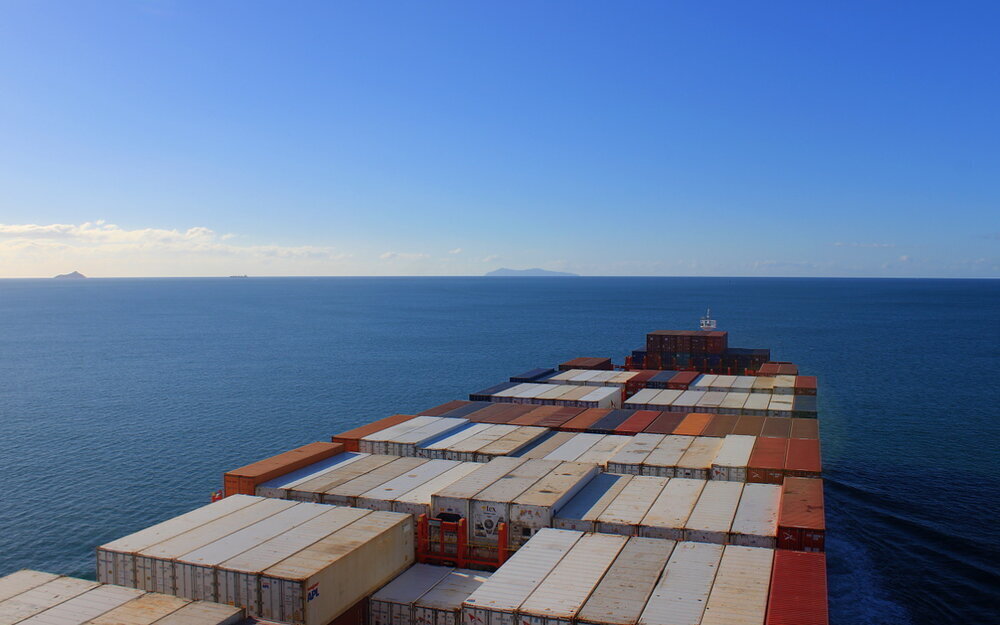Iran-UAE five-month trade exceeds $11b

TEHRAN - The value of non-oil trade between Iran and the United Arab Emirates (UAE) stood at $11.009 billion in the first five months of the current Iranian calendar year (March 20-August 21), the Islamic Republic of Iran Customs Administration (IRICA) reported.
The IRICA report put the weight of the non-oil trade between the two countries at 10.533 million tons.
In early August, the Ambassador of the United Arab Emirates in Tehran said over 122,000 Iranian business persons are currently working in the UAE.
“Economic figures show that Iran-UAE business interactions have increased in recent years, and more than 122,000 Iranian businessmen are doing business in the UAE,” Saif Mohammed al-Zaabi said in a meeting with Head of Iran Chamber of Cooperatives Bahman Abdollahi.
Pointing out that the problems of Iranian and Emirati businessmen and economic operators are not political but in the legal field, he admitted: “Cooperation between the two countries in the field of sea and air transport has also increased.”
Abdollahi for his part introduced some of the capabilities of the cooperative sector in Iran and said: “Cooperatives have an important and effective position in Iran and a significant part of the production in our country is done by cooperatives.”
The value of non-oil trade between Iran and the UAE stood at $8.064 billion during the first four months of the current Iranian calendar year (March 20-July 21), the head of the Islamic Republic of Iran Customs Administration (IRICA) announced.
Iran and the United Arab Emirates signed a memorandum of understanding (MOU) for expanding economic cooperation in a variety of areas at the end of the two countries’ 3rd Joint Economic Committee meeting in May 1.
The MOU was signed by former Iranian Transport and Urban Development Minister Mehrdad Bazrpash and UAE’s Economy Minister Abdullah bin Touq Al Marri, who co-chaired the joint meeting.
During the mentioned committee meeting, the two sides stressed the need for further expansion of economic cooperation between Tehran and Abu Dhabi.
Speaking at the end of the meeting, Bazrpash said: “We have held the joint commission between the two countries after 10 years, which is an opportunity to develop the commercial and economic relations between the two countries.”
“The UAE, as Iran's second biggest trade partner, has great strategic importance for us,” the minister said.
Referring to the location of Iran and the UAE in the International North-South Transit Corridor (INSTC), Bazarpash said: “Access to the markets of the north and south can create an opportunity for the two countries to cooperate.”
In the end, the minister emphasized solving the banking and monetary problems between the two countries to facilitate bilateral trade relations.
Abdullah bin Touq Al Marri for his part underlined the importance of the meeting, saying: “Holding today's meeting shows the development and expansion of economic relations between the two countries. After China, the UAE has the largest amount of trade relations with Iran. The trade value of the two countries has reached 27 billion dollars and many Iranian companies are established in the UAE.”
“Creating new opportunities for transportation and banking cooperation is one of the achievements of this commission,” the official said.
Referring to the performance of the UAE government in the field of investment, the official said: “The approval of the law on the formation of foreign companies and the government’s support for companies that operate in the field of new energies has created a good opportunity for business with the UAE.”
The 3rd Iran-UAE Joint Economic Commission was held in Abu Dhabi from April 30 until May 1.
As announced by the head of the Islamic Republic of Iran Customs Administration, the value of Iran’s non-oil trade with its neighbors increased by 16 percent in the first five months of the current Iranian calendar year to reach $26.857 billion.
Mohammad Rezvanifar put the weight of non-oil trade with the neighboring countries at 43.579 million tons in the said period, noting that the trade between the two sides also increased by 10 percent in terms of weight.
During the mentioned five months, Iran exported 34.118 million tons of goods worth $13.402 billion to its neighbors, while importing 9.461 million tons of commodities valued at $13.455 billion.
Iran’s exports to neighboring countries in the first five months of this year compared to the same period last year increased by 11 percent in terms of weight and 19 percent in terms of value, respectively; and imports from neighboring countries increased by 10 percent and 13 percent respectively in terms of weight and value, according to Rezvanifar.
He named Iraq, the United Arab Emirates (UAE), Turkey, Pakistan, and Afghanistan as the top importers of Iranian goods among the neighboring countries, and the UAE, Turkey, Russia, Oman, and Pakistan as the main sources of imports in the said five months.
Increasing non-oil exports to the neighboring countries is one of the major plans that the Iranian government has been pursuing in recent years.
Iran shares land or water borders with 15 countries namely UAE, Afghanistan, Armenia, Azerbaijan, Bahrain, Iraq, Kuwait, Kazakhstan, Oman, Pakistan, Qatar, Russia, Turkey, Turkmenistan, and Saudi Arabia.
MA
Leave a Comment